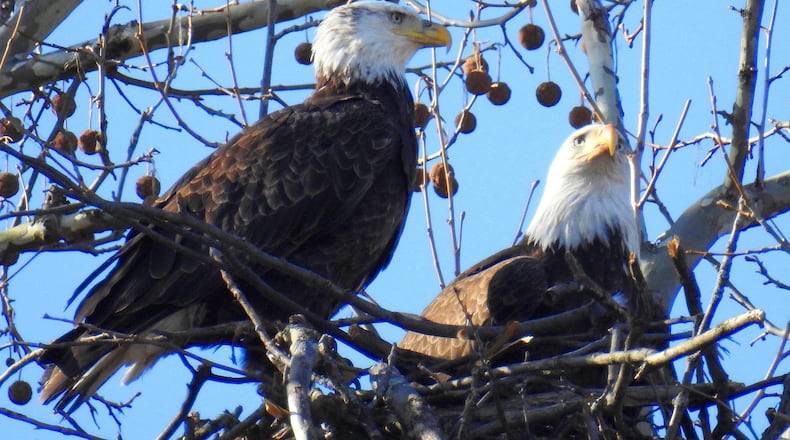The Division of Wildlife followed up on the citizen reports and confirmed nests in 87 of the state’s 88 counties.
Active nests are those with an incubating eagle, eggs or eaglets present. In the 2025 census, 964 bald eagle nests were confirmed.
“The bald eagle is one of Ohio’s great conservation success stories,” said ODNR Director Mary Mertz. “The eagle’s remarkable comeback over the last few decades, both in Ohio and nationwide, proves how much we can accomplish when we conserve and protect habitat.”
Bald eagles thrive in wetland areas because of their easy access to food.
Counties near Lake Erie and other large bodies of water, including Ottawa (112), Sandusky (61), Erie (40), Seneca (36), Wyandot (31), Trumbull (29), Lucas (27), Huron (21), Wood (20), Coshocton (19), Knox (19), Licking (19) and Mercer (19) counties, have the highest number of bald eagle nests.
In the Miami Valley, the following number of nests were confirmed:
- Butler: 4
- Champaign: 3
- Clark: 7
- Darke: 2
- Greene: 6
- Miami: 9
- Montgomery: 3
- Preble: 5
- Warren: 9
Meigs County is the only county in Ohio without a confirmed nest.
In the spring, the Division of Wildlife uses aerial surveys on parts of the state to estimate the nesting bald eagle population, according to ODNR.
The complete nest census, where each nest is counted, happens less frequently. The last nest census was in 2020 when 707 active bald eagle nests were confirmed. There was a 36% increase in active nests from 2020 to 2025, according to ODNR.
“The census was a success because of the involvement of so many Ohioans. Thank you to each of you who contributed to this monumental effort,” said Laura Kearns, a wildlife biologist with the Division of Wildlife. “This comprehensive study shows that Ohio’s eagle population is resilient and thriving.”
Data from the 2025 aerial survey shows a success rate, or number of nests with eggs or eaglets, was 78%.
The success rate was 82% in 2024 and 73% in 2023, ODNR said.
About the Author

